In the western United States, Nevada is known for its diverse and rugged landscape, ranging from arid deserts to towering mountains. Amidst this stunning natural backdrop, a fascinating bird species call Nevada home.
However, among the region’s most captivating and formidable inhabitants are the birds of prey. These majestic creatures, equipped with sharp talons, hooked beaks, and exceptional hunting skills, have adapted to thrive in the Nevada wilderness over time.
From the powerful golden eagles soaring high above to the stealthy North American falcons darting through the skies, Nevada’s birds of prey are an integral part of the ecosystem and symbolize the untamed spirit of the Silver State.
In this essay, we will delve into the captivating world of Nevada’s birds of prey, exploring their unique characteristics, fascinating adaptations, and their vital role in maintaining the delicate balance of nature in this beautiful region.
15 Birds of Prey in Nevada
Nevada’s diverse landscapes, including deserts, mountains, and valleys, are home to various birds of prey. Here are 15 species of raptors that can be found in Nevada:
1. Sharp-shinned Hawk (Accipiter striatus)

The Sharp-shinned Hawk, Accipiter striatus, is the smallest hawk in North America. This agile raptor is known for its acrobatic flights through dense forests, preying primarily on small birds.
With slate-grey above and barred reddish-orange below, they are often seen darting across clearings or lurking near bird feeders to ambush unsuspecting prey.
Sharp-skinned hawks are migratory, breeding in northern forests and wintering in southern areas. Despite their stealthy nature, they play a significant role in controlling bird populations and maintaining the ecological balance.
| Kingdom | Animalia |
| Phylum | Chordata |
| Class | Aves |
| Order | Accipitriformes |
| Family | Accipitridae |
| Genus | Accipiter |
| Species | A. striatus |
2. Golden Eagle (Aquila chrysaetos)
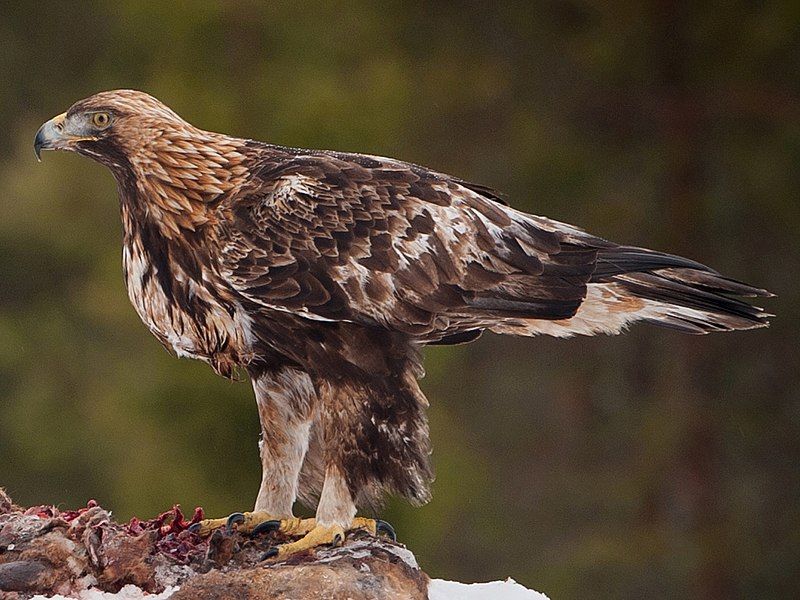
Aquila Chrysaetos, the Golden Eagle, is one of the largest and most powerful birds of prey in the Northern Hemisphere.
Sporting dark brown plumage with lighter golden-brown nape feathers, they inhabit open and semi-open landscapes where they hunt mammals, birds, and fish.
Golden Eagles are solitary creatures, often nesting in high places like cliffs and tall trees. Their remarkable flying ability and keen eyesight make them formidable hunters.
Conservation efforts are crucial for their protection, as habitat destruction and persecution have threatened their populations in some areas.
| Kingdom | Animalia |
| Phylum | Chordata |
| Class | Aves |
| Order | Accipitriformes |
| Family | Accipitridae |
| Genus | Aquila |
| Species | A. chrysaetos |
3. Cooper’s Hawk (Accipiter cooperii)
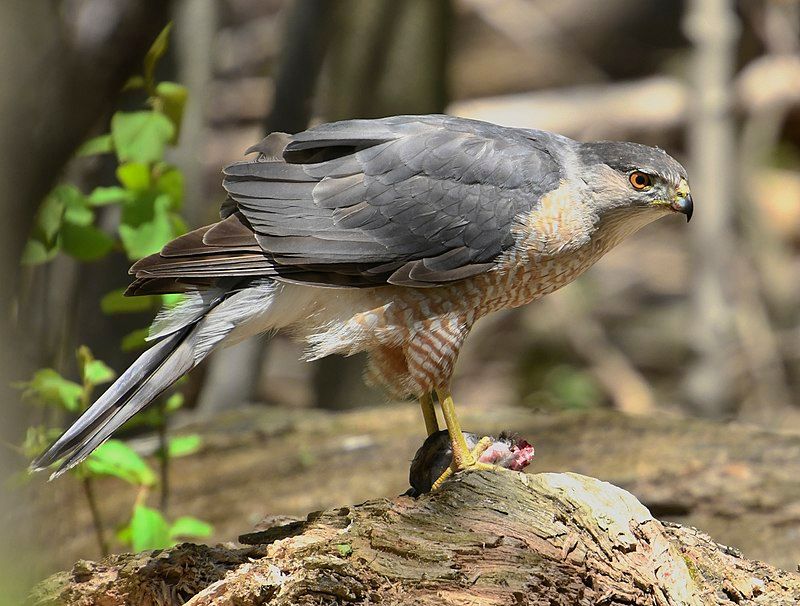
Accipiter cooperii, the Cooper’s Hawk, is a medium-sized hawk commonly found in wooded habitats across North America.
They have blue-grey backs, reddish-barred chests, and long, banded tails, adept at navigating through dense foliage to catch birds and small mammals.
Once targeted due to perceived threats to poultry, their populations have rebounded, and they are now frequently seen in urban and suburban areas.
Cooper’s Hawks are monogamous and may return to the same nesting area annually, showcasing remarkable loyalty and territoriality.
| Kingdom | Animalia |
| Phylum | Chordata |
| Class | Aves |
| Order | Accipitriformes |
| Family | Accipitridae |
| Genus | Accipiter |
| Species | A. cooperii |
4. Bald Eagle (Haliaeetus leucocephalus)
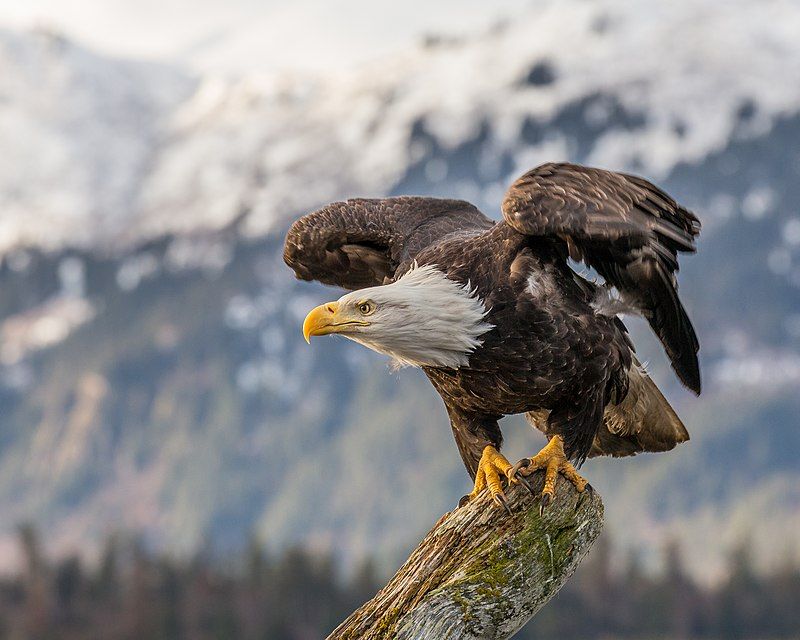
The Bald Eagle, Haliaeetus leucocephalus, is the United States national symbol, known for its white head and tail juxtaposed against a dark brown body and wings.
These majestic birds prefer habitats near water bodies, where they fish with incredible skill. Bald Eagles build some of the largest bird nests known, reflecting their strength and persistence.
They have made a remarkable comeback from the brink of extinction thanks to conservation efforts, symbolizing hope and resilience.
Bald Eagles are a symbol of freedom and play a vital role in their ecosystems as top predators.
| Kingdom | Animalia |
| Phylum | Chordata |
| Class | Aves |
| Order | Accipitriformes |
| Family | Accipitridae |
| Genus | Haliaeetus |
| Species | H. leucocephalus |
5. American Kestrel (Falco sparverius)
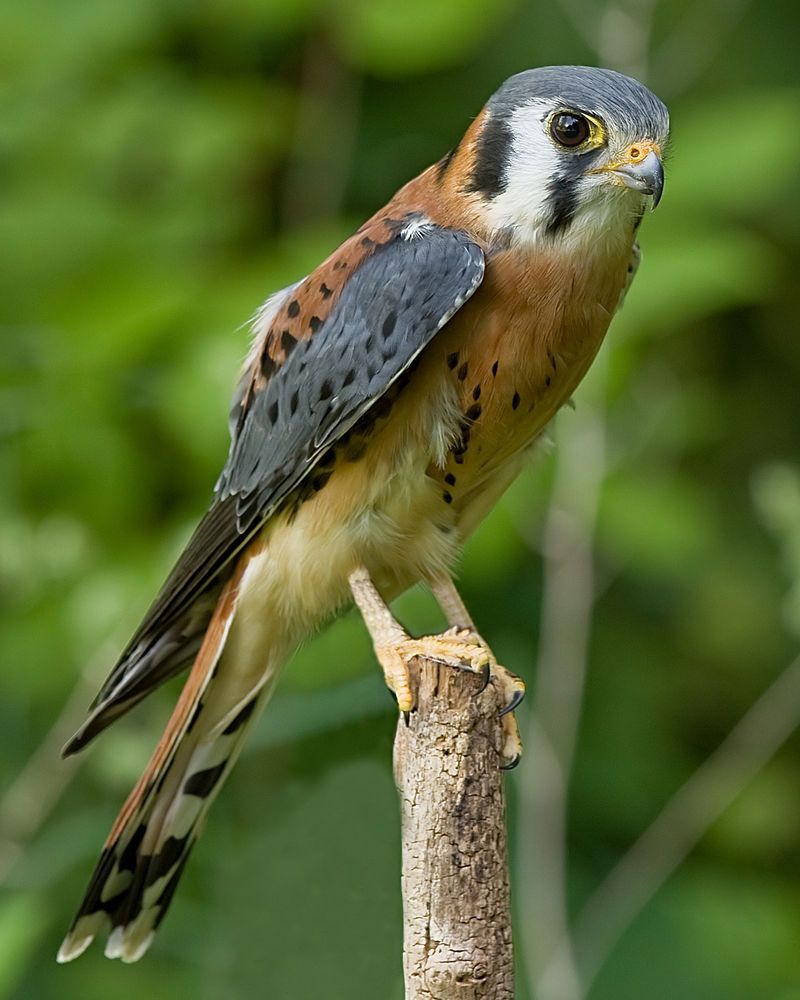
| Kingdom | Animalia |
| Phylum | Chordata |
| Class | Aves |
| Order | Falconiformes |
| Family | Falconidae |
| Genus | Falco |
| Species | F. sparverius |
6. Ferruginous Hawk (Buteo regalis)
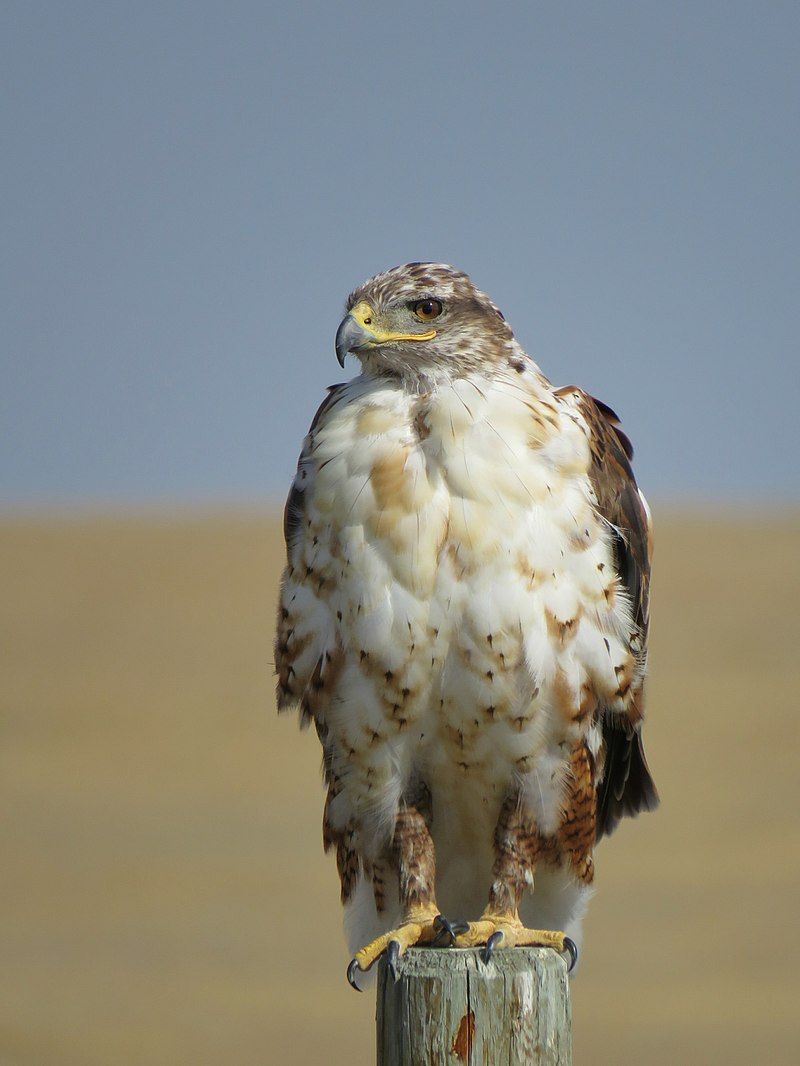
The Ferruginous Hawk, Buteo regalis, stands as the largest North American hawk, exhibiting a striking appearance with its rusty-red back and wide wingspan.
Inhabiting open grasslands and prairies, it preys on rodents and small animals, showcasing remarkable hunting prowess.
This species is notable for its two morphs: the light, which sports a white underbody and rust-coloured legs, and the dark, less common variant.
Ferruginous Hawks construct large nests in trees, bushes, or on the ground, reflecting their adaptability. Conservation efforts focus on protecting their habitat to ensure their survival amidst changing landscapes.
| Kingdom | Animalia |
| Phylum | Chordata |
| Class | Aves |
| Order | Accipitriformes |
| Family | Accipitridae |
| Genus | Buteo |
| Species | B. regalis |
7. Osprey (Pandion haliaetus)
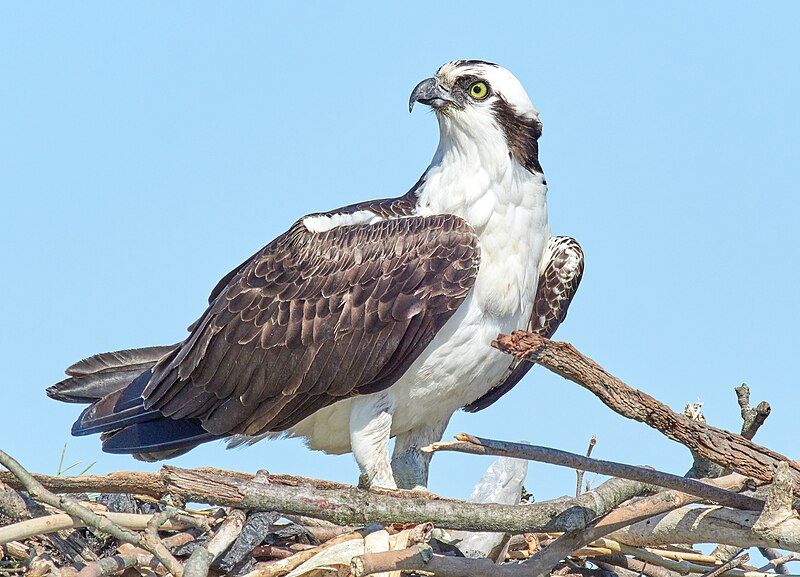
Pandion haliaetus, known as the Osprey, is a unique bird of prey specialized in fishing. With a global presence near water bodies, its diet exclusively comprises fish captured with precise dives.
Distinguished by its white underparts, dark brown upperparts, and a characteristic M-shaped flight pattern, the Osprey showcases exceptional adaptations for aquatic hunting, including reversible outer toes and barbed pads for gripping slippery prey.
Ospreys build large, conspicuous nests near water atop poles, trees, or platforms, underscoring their dependency on aquatic ecosystems for survival and reproduction.
| Kingdom | Animalia |
| Phylum | Chordata |
| Class | Aves |
| Order | Accipitriformes |
| Family | Pandionidae |
| Genus | Pandion |
| Species | P. haliaetus |
8. Turkey Vulture (Cathartes aura)

The Turkey Vulture, Cathartes aura, is a scavenger recognized for its crucial ecological role in disposing of carrion.
With a wide range across the Americas, it’s easily identified by its red, bald head and dark body, soaring with a distinctive wobbly motion. Unlike other raptors, Turkey Vultures have a keen sense of smell to locate dead animals.
Their presence contributes significantly to ecosystem health by preventing the spread of disease from decaying animals. Social birds roost in large communal groups, showcasing a complex social structure within their populations.
| Kingdom | Animalia |
| Phylum | Chordata |
| Class | Aves |
| Order | Accipitriformes |
| Family | Cathartidae |
| Genus | Cathartes |
| Species | C. aura |
9. Swainson’s Hawk (Buteo swainsoni)
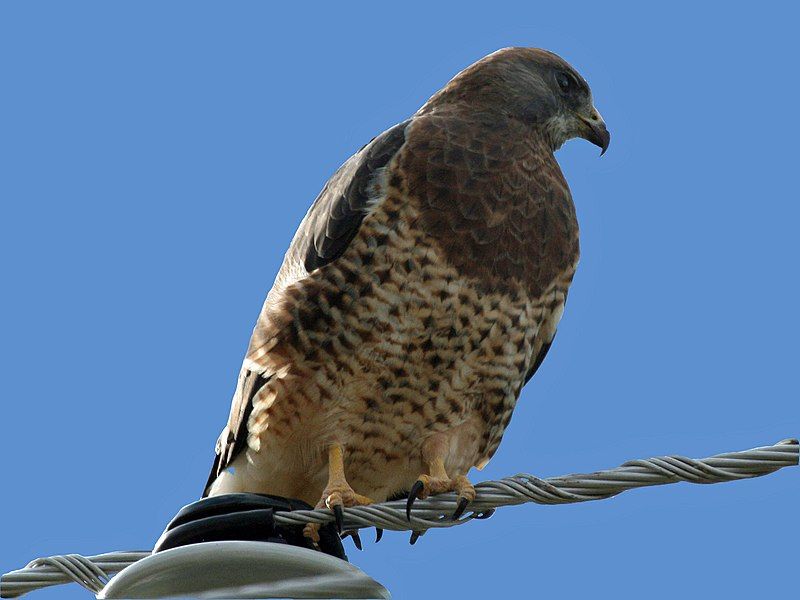
Buteo swainsoni, or Swainson’s Hawk, is a long-distance migrant, traveling from North American grasslands to South America’s pampas for winter.
This bird of prey exhibits versatility in diet, feeding on insects, rodents, and reptiles. Its plumage varies from light to dark morphs, with all featuring a broad, white bib and long, pointed wings.
Swainson’s Hawks are known for their communal roosting during migration, gathering in thousands, a spectacular sight.
Conservation efforts are crucial for protecting their migratory corridors, which are threatened by habitat loss and pesticide use.
| Kingdom | Animalia |
| Phylum | Chordata |
| Class | Aves |
| Order | Accipitriformes |
| Family | Accipitridae |
| Genus | Buteo |
| Species | B. swainsoni |
10. Short-eared Owl (Asio flammeus)

| Kingdom | Animalia |
| Phylum | Chordata |
| Class | Aves |
| Order | Strigiformes |
| Family | Strigidae |
| Genus | Asio |
| Species | A. flammeus |
11. Barn Owl (Tyto alba)

The Barn Owl, Tyto alba, is renowned for its distinctive heart-shaped face, white underparts, and golden-buff back and wings.
This nocturnal predator is found in various habitats around the world, from rural farmland to urban areas, where it can hunt for rodents, its primary prey.
Barn Owls emit an eerie, high-pitched scream and a variety of other sounds but do not hoot like other owls. They are cavity nesters, often occupying barns, abandoned buildings, and tree hollows.
Conservation efforts for Barn Owls focus on preserving their hunting grounds and nesting sites to support their populations.
| Kingdom | Animalia |
| Phylum | Chordata |
| Class | Aves |
| Order | Strigiformes |
| Family | Tytonidae |
| Genus | Tyto |
| Species | T. alba |
12. Burrowing Owl (Athene cunicularia)

Athene cunicularia, or the Burrowing Owl, is a small, ground-dwelling owl with long legs and a sandy, speckled plumage that helps it blend into its prairie and desert habitats.
Unlike most owls, Burrowing Owls are active during the day, especially when raising their young. They make their homes in burrows dug by other animals, such as prairie dogs or ground squirrels.
These owls have a varied diet, including insects, rodents, and small reptiles. Conservation efforts are crucial for the Burrowing Owl, as their habitats are threatened by development and the decline of burrowing mammals.
| Kingdom | Animalia |
| Phylum | Chordata |
| Class | Aves |
| Order | Strigiformes |
| Family | Strigidae |
| Genus | Athene |
| Species | A. cunicularia |
13. Kite (General Overview)
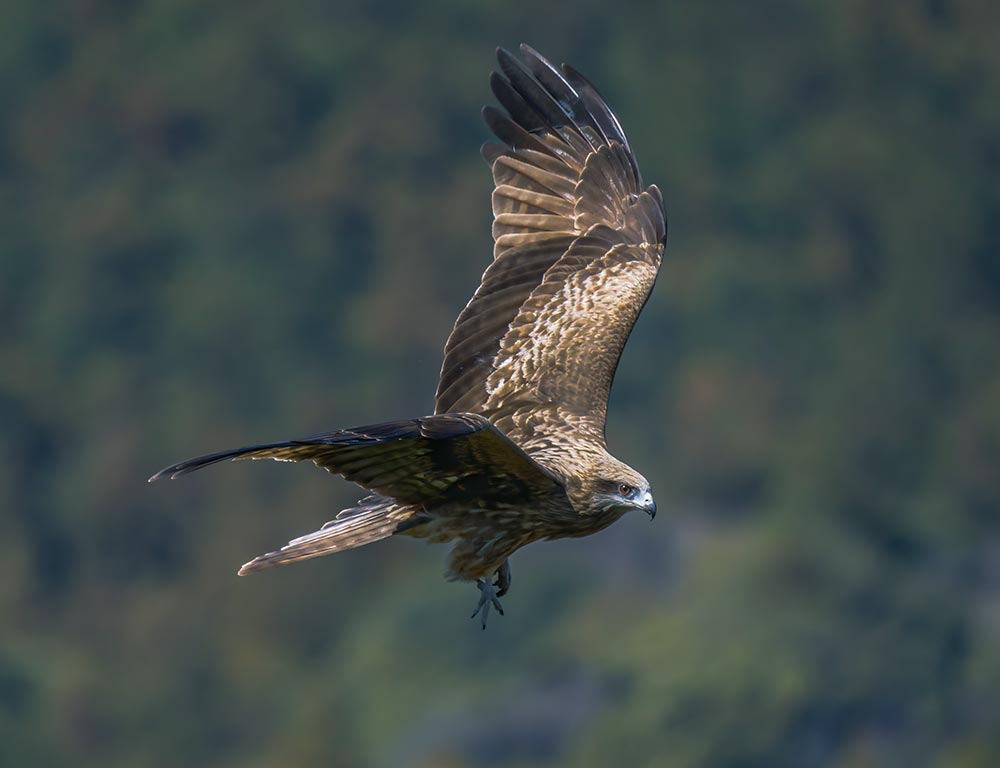
Kites are medium-sized birds of prey known for their graceful, soaring flight, belonging to several genera within the family Accipitridae.
They have long wings and often a forked tail, which they use to manoeuvre effortlessly in the air while hunting for insects, small mammals, and reptiles.
Kites are found worldwide in warm regions and are more commonly seen in open or lightly wooded areas where they can easily spot their prey from above.
Their diet and habitat preferences vary among the different species of kites, but all share the characteristics of agile flight and keen vision.
| Kingdom | Animalia |
| Phylum | Chordata |
| Class | Aves |
| Order | Accipitriformes |
| Family | Accipitridae |
14. Owl (General Overview)
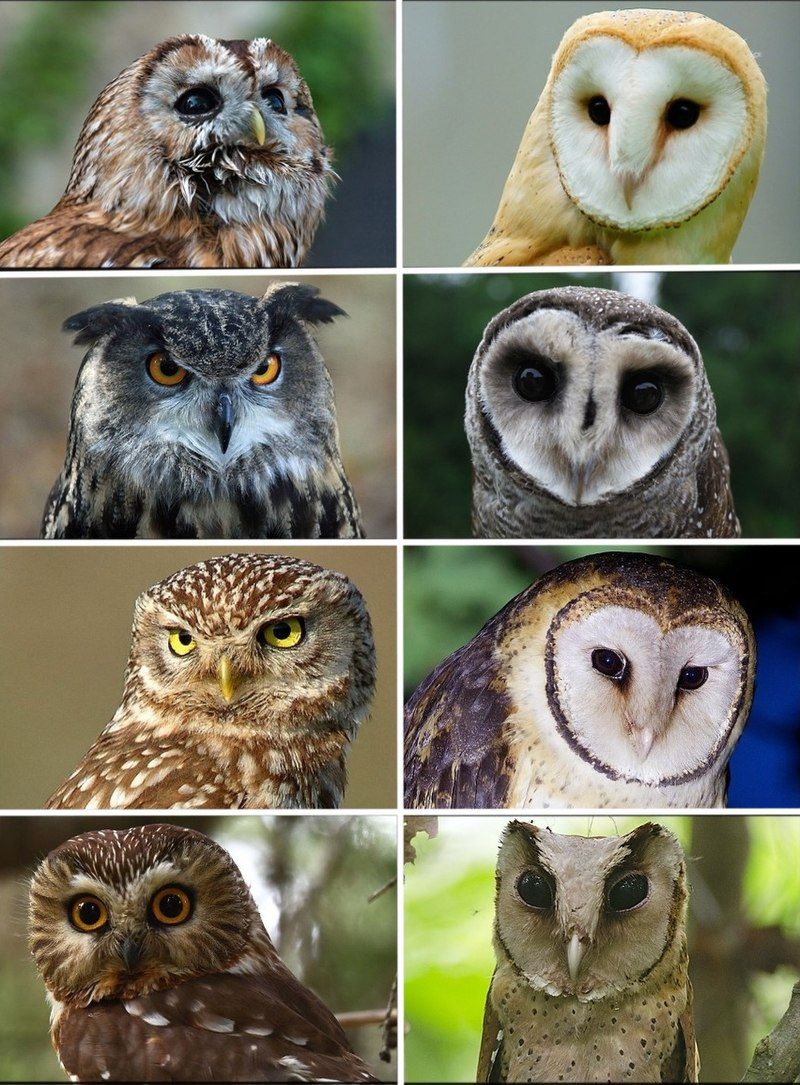
Owls are a diverse group of nocturnal birds of prey characterized by their silent flight, forward-facing eyes, and distinct facial discs.
They belong to the order Strigiformes, which is divided into two families: the Tytonidae, which includes Barn Owls, and the Strigidae, encompassing all other owls.
Owls are found across the globe in various habitats, from dense forests to open grasslands. They play a crucial role in controlling rodent populations and other small prey.
Owls have adapted to hunting at night with exceptional hearing and night vision, making them one of the most efficient nocturnal predators.
| Kingdom | Animalia |
| Phylum | Chordata |
| Class | Aves |
| Clade | Telluraves |
| Order | Strigiformes |
15. Circinae (Harriers)
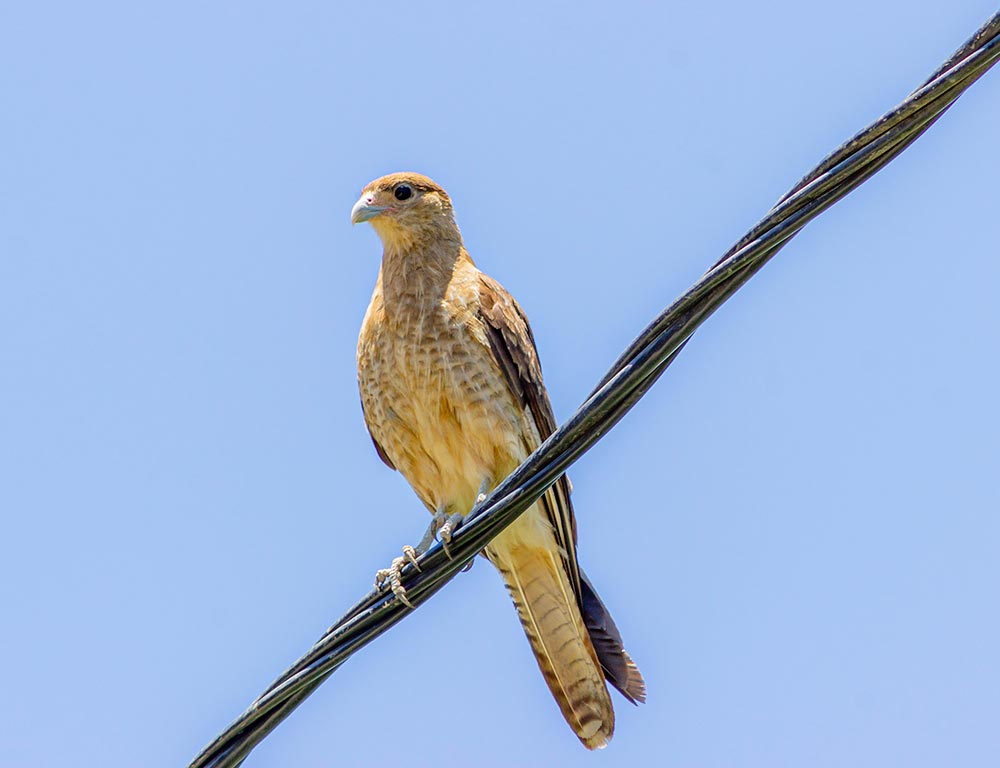
| Kingdom | Animalia |
| Phylum | Chordata |
| Class | Aves |
| Order | Accipitriformes |
| Family | Accipitridae |
| Genus | Circus |
Conclusion
Birds of prey in Nevada play an integral role in maintaining the ecosystem’s balance and are essential for controlling rodent populations.
With diverse species such as the golden eagle, bald eagle, and peregrine falcon soaring through the state’s skies, Nevada is a haven for these majestic creatures.
Conservation efforts, including habitat preservation and the promotion of responsible farming practices, are crucial to ensuring the long-term survival of these birds.
By protecting and appreciating birds of prey in Nevada, we not only safeguard their future but also contribute to the wellbeing of the entire ecosystem..